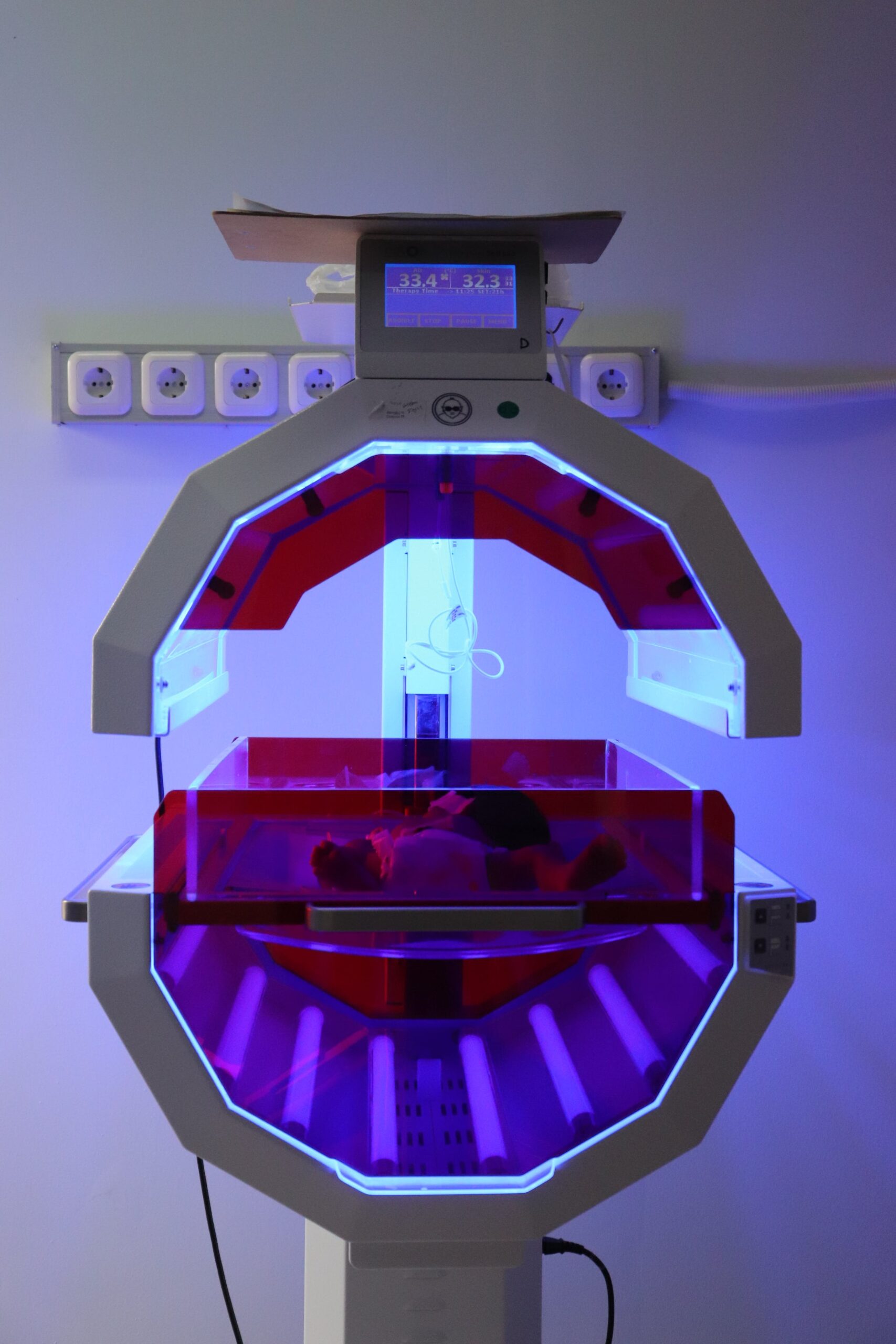
Key Takeaways
-
LED light therapy can significantly improve the healing of chronic diabetic wounds.
-
It works by stimulating collagen production, reducing inflammation, and promoting angiogenesis.
-
Different colors of LED light can have various effects on the skin, with red and infrared being particularly beneficial for wound healing.
-
Real-life case studies show promising results, with many patients experiencing reduced wound size and improved healing times.
-
For best results, LED light therapy should be combined with proper wound care and potentially other treatments.
The Power of LED Light Therapy in Diabetic Skin Healing

What is LED Light Therapy?
Imagine a gentle, non-invasive treatment that can coax your skin into healing itself. That’s LED light therapy for you. It uses specific wavelengths of light to trigger natural biological processes that repair and rejuvenate the skin. It’s like giving your skin a dose of vitamins, but with light!
Why Diabetic Skin Needs Special Care
When you have diabetes, your skin is not just skin. It’s a battlefield. High blood sugar levels can wreak havoc, slowing down healing and making you more prone to infections. That’s why it’s crucial to give it some extra TLC. And that’s where LED light therapy shines – literally!
Decoding LED Light Therapy for Diabetics

-
It’s non-invasive and pain-free – no needles, no surgery, just light.
-
Each color penetrates the skin at different depths, targeting specific issues.
-
Red and near-infrared lights are the MVPs for wound healing, going deeper into the skin to work their magic.
Understanding the Healing Process
Healing is complex, and when you’re diabetic, it’s like healing in slow motion. Blood flow is sluggish, and those vital repair crews (white blood cells) don’t always get where they need to go. LED light therapy helps by boosting circulation and fighting inflammation, which is like clearing a traffic jam so the repair crews can reach the wound site faster.
Colors of Light and Their Functions
Different colors do different jobs. Red light is like a healing laser beam, penetrating the skin to reduce inflammation and increase circulation. Near-infrared light goes even deeper, whispering to your cells to regenerate and heal. Together, they’re a dynamic duo for diabetic skin healing.
LED Light Therapy has been shown to be effective in healing diabetic skin conditions. This form of therapy uses specific wavelengths of light to penetrate the skin, promoting repair and regeneration. Studies have documented improvements in skin healing, with a reduction in healing times and complications. LED Light Therapy is a non-invasive option that can complement traditional treatments for diabetic skin issues.
The Case of John: Overcoming Foot Ulcers
John, a 58-year-old with type 2 diabetes, struggled with a stubborn foot ulcer that just wouldn’t heal. Traditional treatments were slow and offered minimal improvement. That’s when his doctor suggested trying LED light therapy. After a series of treatments with red and near-infrared light, John noticed a significant change. The ulcer started to shrink in size, and the surrounding skin regained its healthy color. It was a game-changer for John, providing not just physical relief but also emotional comfort, knowing there was a solution out there for him.
Emma’s Journey: Healing Chronic Leg Wounds
Emma had been living with diabetes for over a decade and with it, a chronic leg wound that seemed to have become a part of her life. She was introduced to LED light therapy by a friend who had seen impressive results. Skeptical at first, Emma decided to give it a shot. Within weeks of consistent LED light therapy sessions, her wound started to look better than it had in years. Emma’s journey wasn’t just about healing a wound; it was about regaining her confidence and the comfort of living without constant pain.
Step-by-Step Guide to Using LED Light Therapy
So, how do you use LED light therapy? It’s simpler than you might think. You’ll need an LED light device, which you can find online or at a medical supply store. Make sure it’s FDA-approved for skin healing. Here’s what to do next:
Setting Up Your LED Light Therapy at Home
-
Find a comfortable place where you can relax for the duration of the treatment.
-
Place the LED light device directly over the wound, making sure it’s clean and dry.
-
Turn on the device and let it work its magic for about 15 to 30 minutes, depending on the manufacturer’s instructions.
It’s that easy. You can use this time to listen to music, meditate, or just take a moment for yourself. Remember, consistency is key. Stick to a schedule to get the best results.
Best Practices for Optimal Results
For the best outcomes with LED light therapy, keep these tips in mind:
-
Use the light therapy consistently, as per the recommended frequency.
-
Keep the wound clean and follow any other wound care instructions from your healthcare provider.
-
Stay hydrated and maintain a balanced diet to support your body’s natural healing process.
And most importantly, if you have any concerns or if the wound appears to be getting worse, contact your healthcare provider immediately.
Maximizing the Benefits of LED Light Therapy
To get the most out of your LED light therapy, consider these additional strategies:
Combining LED Therapy with Other Treatments
LED light therapy can be a powerful ally in wound healing, but it doesn’t have to work alone. It can be combined with other treatments like proper wound care, medications, or even hyperbaric oxygen therapy, depending on your specific situation. Always consult with your healthcare provider to create a comprehensive treatment plan.
Lifestyle Changes to Support Skin Healing
|
Lifestyle Change |
Benefit |
|---|---|
|
Regular Exercise |
Improves circulation and blood flow to aid healing. |
|
Healthy Diet |
Provides the nutrients needed for skin repair. |
|
Smoking Cessation |
Increases oxygen levels in the blood, essential for healing. |
|
Stress Management |
Reduces inflammation and promotes a healthier immune response. |
|
Adequate Sleep |
Allows the body to repair and regenerate skin cells. |
By incorporating these changes into your life, you’re not just aiding your current wound’s healing—you’re also helping prevent future wounds and promoting overall well-being.
FREQUENTLY ASKED QUESTIONS
1. How Long Does It Take to See Results from LED Light Therapy?
Results from LED light therapy can vary, but most people start to see a difference within a few weeks of regular use. It’s not an overnight miracle—think of it more like a garden. With the right conditions and a little patience, healing begins to bloom. For chronic wounds, it might take longer, but the key is consistency.
Remember, every person’s skin and health condition are unique, so while one individual might see rapid improvement, another might need more time. It’s essential to keep up with the treatment and track your progress with photos and notes.
2. Is LED Light Therapy Safe for All Types of Diabetic Skin Wounds?
LED light therapy is generally safe for most types of diabetic skin wounds, but there are always exceptions. For instance, if you have a wound with an active infection, it’s crucial to get that under control first. LED light therapy is not a substitute for proper wound care or antibiotics if they’re needed.
It’s also important to use LED light therapy devices as directed and to ensure they’re FDA-approved for skin healing. If you’re ever in doubt, it’s best to consult with a healthcare professional who can guide you on the safest and most effective use for your specific situation.
Moreover, if you have photosensitivity or are taking medications that increase light sensitivity, you’ll want to proceed with caution. Always read the instructions and warnings that come with your LED light therapy device to make sure it’s suitable for you.
And let’s not forget to mention that using LED light therapy on open or bleeding wounds is a no-go. The light is for healing, not for acute injuries that need immediate medical attention.
3. Can LED Light Therapy Reduce the Risk of Future Diabetic Skin Wounds?
While LED light therapy is excellent for healing existing wounds, its ability to prevent future wounds is still being explored. However, because it improves circulation and promotes healthy skin regeneration, it could potentially help make your skin more resilient. It’s like building a better defense system against the trials that diabetic skin faces.
Of course, the best way to prevent future wounds is to manage your diabetes effectively, keep your skin moisturized, and check your feet and legs regularly for any signs of trouble. LED light therapy can be part of a comprehensive approach to keeping your skin in top shape.
4. Are There Any Side Effects to Using LED Light Therapy?
One of the great things about LED light therapy is that it’s non-invasive and has minimal side effects. Some people might experience a slight warming sensation during treatment, which is generally considered comfortable and even relaxing. However, it’s important to follow the device’s instructions to avoid overuse, which could potentially lead to skin irritation.
5. How Often Should LED Light Therapy Be Applied for Skin Healing?
The frequency of LED light therapy sessions will depend on the severity of your wound and the specific device you’re using. Generally, it’s recommended to use the therapy daily or several times a week to see the best results.
Consistency is crucial, so try to integrate it into your routine in a way that’s easy for you to maintain. For example, you could use it every night while winding down before bed or every morning as you start your day.


